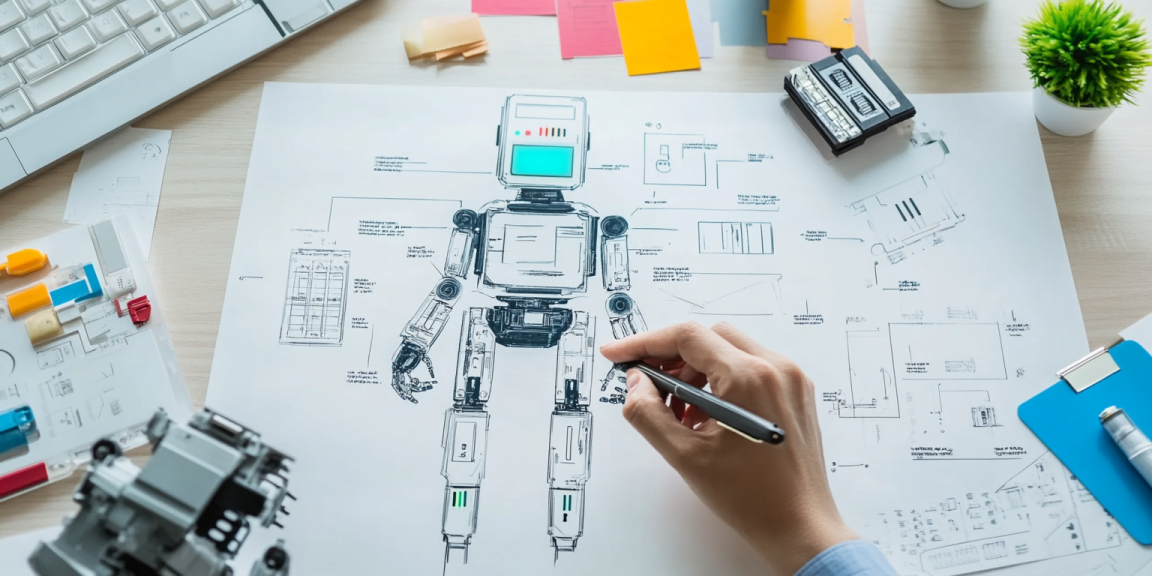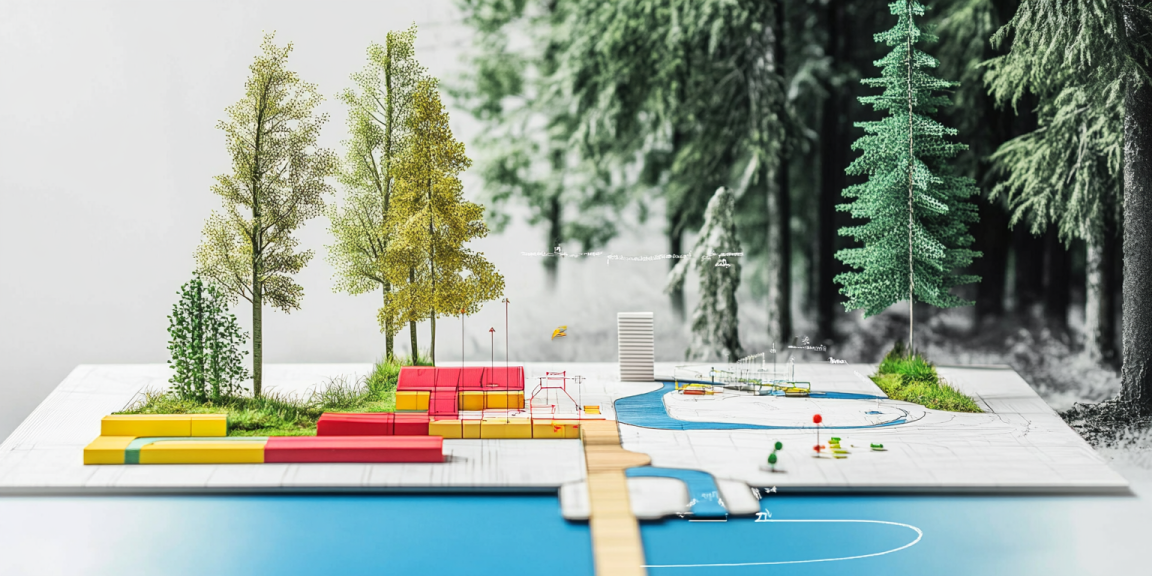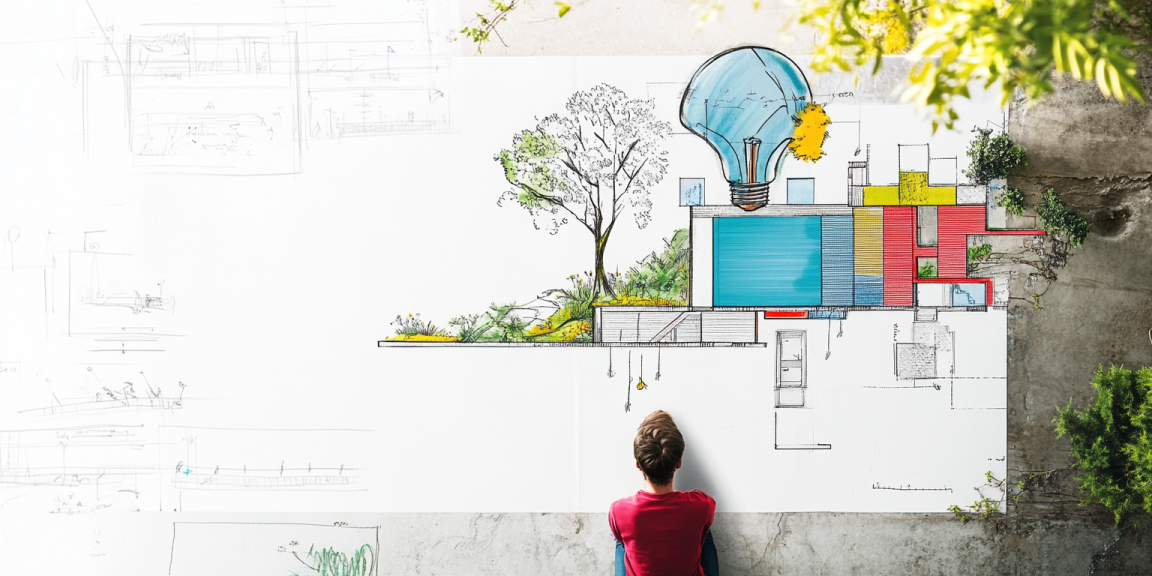Typography plays a crucial role in web design. Fonts are not just visual elements; they…

As technology continues to evolve, the boundaries of user experience (UX) design are being pushed to new and exciting limits. Artificial Intelligence (AI) has emerged as a transformative force, reshaping how designers think about and create digital experiences. The integration of AI in UX design not only enhances efficiency but also opens doors to personalized and predictive interactions that were once unimaginable.
In this blog post, we’ll explore how AI is shaping the future of UX design, address common questions about this evolution, highlight current trends, and discuss the valuable insights designers need to navigate this rapidly changing landscape.
What is AI in UX Design?
Artificial Intelligence in UX design refers to the use of machine learning algorithms, natural language processing, and data-driven insights to create, enhance, or automate user interfaces and experiences. By leveraging AI, designers can analyze vast amounts of user data, predict behaviors, and create adaptive systems that respond to user needs in real time.
Some examples of AI-powered UX include:
- Chatbots and virtual assistants that provide customer support.
- Recommendation engines on platforms like Netflix and Amazon.
- Adaptive interfaces that adjust layout and content based on user preferences.
Why is AI a Game-Changer for UX Design?
1. Personalization at Scale
AI enables unparalleled levels of personalization. By analyzing user behavior, preferences, and past interactions, AI can tailor experiences for individual users. For instance, an e-commerce site can recommend products based on a user’s browsing history and shopping patterns.
2. Enhanced Decision-Making
AI tools can provide designers with actionable insights from user data. Heatmaps, click analytics, and A/B testing powered by AI help identify what works and what doesn’t, allowing for data-driven design decisions.
3. Automation of Routine Tasks
AI can handle repetitive design tasks, such as resizing assets for multiple screen sizes or creating variations of a design. This frees up designers to focus on strategic and creative aspects of their work.
4. Predictive Analytics
AI can predict user needs before they are explicitly expressed. For example, a travel app might suggest destinations based on the user’s location, weather, and travel history.
5. Accessibility Improvements
AI-powered tools can help create more inclusive designs by identifying accessibility issues and suggesting solutions. Voice recognition, text-to-speech, and automated alt-text generation are examples of AI contributing to accessible design.
How AI is Changing UX Design Processes
1. User Research
AI automates user research by analyzing feedback, behavior, and engagement metrics to uncover patterns and insights. This reduces the time and effort required for manual data collection and analysis.
2. Prototyping and Wireframing
AI-driven tools like Adobe Sensei and Sketch’s smart features assist designers in creating wireframes and prototypes faster. These tools can even suggest layouts based on input content and objectives.
3. Content Generation
AI tools can generate content such as text, images, or even videos based on user needs and preferences. For example, tools like Copy.ai and Jasper can create marketing copy that aligns with a brand’s tone and style.
4. Continuous Improvement
AI doesn’t just stop at design—it continuously monitors user interactions and adapts the experience in real time. This ensures that digital products evolve with user needs.
Trends in AI and UX Design
1. Conversational Interfaces
AI-powered chatbots and voice assistants like Alexa, Google Assistant, and ChatGPT are becoming integral to UX design. These interfaces provide users with intuitive and efficient ways to interact with systems.
2. Augmented Reality (AR) and Virtual Reality (VR)
AI enhances AR/VR experiences by making them more intuitive and user-friendly. For example, AR apps can use AI to recognize objects in the real world and provide relevant overlays or information.
3. Emotionally Intelligent Interfaces
AI is being trained to recognize user emotions through facial expressions, voice tone, or text inputs. Emotionally intelligent interfaces can adapt their responses to better align with a user’s mood or state of mind.
4. Zero UI
The concept of Zero UI, where interfaces rely on gestures, voice, or contextual triggers instead of screens, is gaining traction. AI plays a key role in enabling these seamless interactions.
5. Ethical AI Design
As AI becomes more prevalent, there’s a growing emphasis on ethical design practices. Designers must consider transparency, bias, and user privacy when integrating AI into UX.
Common Questions About AI in UX Design
1. Will AI Replace UX Designers?
AI is a tool, not a replacement. While it automates repetitive tasks and provides insights, the creative and empathetic aspects of UX design require human expertise. AI enhances a designer’s capabilities rather than eliminating the need for them.
2. How Can Designers Stay Relevant?
To remain competitive, designers should embrace AI tools, develop data literacy, and focus on skills like problem-solving, critical thinking, and storytelling that AI cannot replicate.
3. Is AI in UX Design Expensive?
While some AI tools can be costly, there are many accessible options for smaller teams and individual designers. Additionally, the long-term efficiency gains often outweigh initial investments.
4. How Does AI Impact User Privacy?
AI relies on data, which raises concerns about user privacy. Designers must prioritize transparency, obtain user consent, and ensure compliance with data protection regulations like GDPR.
Valuable Insights for Designers
1. Start Small
Integrating AI doesn’t mean overhauling your entire workflow. Start by adopting AI tools for specific tasks, such as user research or content generation, and expand gradually.
2. Collaborate with AI Experts
UX designers should collaborate with AI developers to understand the technology’s capabilities and limitations. This collaboration ensures that AI is used effectively and ethically.
3. Focus on Empathy
AI can process data, but it cannot understand human emotions in the way designers can. Maintaining an empathetic approach to design ensures that AI-driven experiences remain human-centric.
4. Stay Updated
The field of AI is evolving rapidly. Designers should stay informed about emerging tools, trends, and best practices to remain ahead of the curve.
The Challenges of AI in UX Design
While AI offers numerous benefits, it also presents challenges:
- Bias in AI Algorithms: AI models can perpetuate biases present in their training data, leading to unfair or exclusive designs.
- Over-reliance on Data: AI is only as good as the data it processes. Poor-quality data can result in inaccurate predictions or insights.
- Loss of Human Touch: Over-automation can make designs feel impersonal or overly mechanical.
- Complexity of Implementation: Integrating AI into existing workflows and systems can be technically challenging and resource-intensive.
Case Studies: AI in UX Design
Netflix
Netflix uses AI to analyze viewing habits and recommend content tailored to each user. This personalization has been a key factor in its success.
Spotify
Spotify’s Discover Weekly playlist uses AI to curate music recommendations based on a user’s listening history and preferences.
Duolingo
Duolingo’s AI-driven language learning platform adapts lessons based on a user’s progress and areas of difficulty, creating a personalized learning experience.
The Future Outlook
The future of UX design is inseparable from AI. As AI technologies mature, we can expect even more intuitive, adaptive, and inclusive user experiences. Designers who embrace AI’s potential while maintaining a human-centered approach will lead the way in shaping these innovations.
AI in UX design is not just a trend—it’s a paradigm shift that’s redefining how we interact with digital products. By understanding its possibilities and limitations, designers can harness its power to create experiences that are not only functional but also truly transformative.



